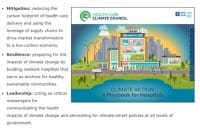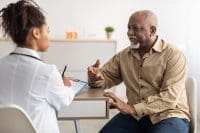When the World Health Organization declared COVID-19 a global pandemic on March 19, 2020, our lives changed forever. An already overburdened healthcare system have become even more taxed by a shortage of nurses to care for the onslaught of patients requiring hospitalization related to COVID-19 symptoms.
Nurses are being asked to work even longer hours, and those who have retired are being asked to return to work. They are working selflessly, tirelessly, and, in too many cases, without proper protective equipment. Sadly, many of them have contracted COVID-19 from patients they are caring for. The big question is: How does a nurse go home and tell loved ones that they have been exposed to COVID-19?
The need to disclose
Most nurses would agree that others need to be informed that they have been exposed to a virus that has resulted in thousands of deaths for one simple reason—it’s the right thing to do. Yet, having that conversation can be quite daunting.
Having the conversation
Starting an open, honest conversation about exposure to COVID-19 with your family and friends will be difficult, but time is of the essence. COVID-19 is highly contagious and is spread from close contact with an infected person. You owe it to your family and friends to notify them of their exposure. It’s natural to feel a certain amount of guilt or fear for exposing your loved ones, but knowledge is power: Your conversation is the first step to having them tested and treated, which in turn will minimize the spread of the virus throughout the community. Telling your friends and family also provides an opportunity to begin protective measures, such as quarantining and monitoring for signs and symptoms.
As soon as you have confirmed your exposure to COVID-19, notify each family and friend in addition to other close contacts; the CDC defines a close contact as “Someone who was within 6 feet of an infected person for a cumulative total of 15 minutes or more over a 24-hour period starting from 2 days before illness onset (or, for asymptomatic patients, 2 days prior to test specimen collection) until the time the patient is isolated.”
For contacts who want additional information about the nature of a close contact, you can provide this information from the CDC: “A close contact is one in which you were within 6 feet of someone who has COVID-19 for a total of 15 minutes or more, you had direct physical contact with the person (hugged or kissed them), you shared eating or drinking utensils, or they coughed, sneezed, or got respiratory droplets on you.”
A phone call is the best method of communicating. Face-to-face contact is discouraged. For those who are technologically savvy, Facetime, Zoom, or Skype are efficient ways to notify family or friends. Other methods of communication are text messages or email. The latter are not ideal because they may seem insensitive, but the bottom line is to inform your contacts as soon as possible. Encourage your family and friends to quarantine and see their healthcare provider if symptoms occur or worsen.
Finding the right words
Having a planned statement may make sharing the disclosure easier. You might begin the conversation by saying, “I was exposed to COVID-19. I have been tested and am awaiting the results. At this time, I have no symptoms, but I wanted to inform you so that you may self-quarantine, consider getting tested, and notify anyone else you have had direct contact with. I apologize for putting you in this position, unfortunately, being a frontline healthcare worker puts me and my loved ones at risk, and I want to make sure you are aware of my status. I will provide future updates.”
Slow the pandemic
To date, the CDC has reported over 16 million cases in the United States since January 2020 and over 300,000 deaths, with thousands of new cases each day. Slowing the spread of the disease is critical. Notifying friends and family of potential exposure and encouraging them to quarantine (the CDC now recommends 7 to 10 days based on symptoms or test results) and get tested is one way to help slow down the transmission of the disease. Telling close friends and family that you possibly exposed them to COVID-19 is uncomfortable, but the pros far outweigh the negative effects of a severe case of COVID-19.
Alnita Jackson and Angela Stewart are assistant professors at Fayetteville State University in Fayetteville, North Carolina.
References
Centers for Disease Control and Prevention. CDC COVID data tracker. December 15, 2020. https://covid.cdc.gov/covid-data-tracker/#cases_casesper100klast7days
Centers for Disease Control and Prevention. Appendix A – Glossary of key terms. October. 21, 2020. cdc.gov/coronavirus/2019-ncov/php/contact-tracing/contact-tracing-plan/appendix.html#contact//
Centers for Disease Control and Prevention. When to quarantine. December 10, 2020. https://www.cdc.gov/coronavirus/2019-ncov/if-you-are-sick/quarantine.html
Cuicinnota D, Vanelli M. WHO declares COVID-19 a pandemic. Acta Biomed. 2020;91(1):157-60.
Vuong, KT. How to tell people you may have coronavirus COVID-19. December 15, 2020. talktomira.com



















1 Comment.
This Article is an eye opener. It has to be hard to have this Conversation and Thanks to this Article, it really gives you the best options, to truthfully tell anyone, that you have Covid-19 or that you have it and may have Exposed them to it, without feeling Ashamed or Guilty. Everyone may not receive it the same way. This definitely makes a difference in how to approach the Conversation.